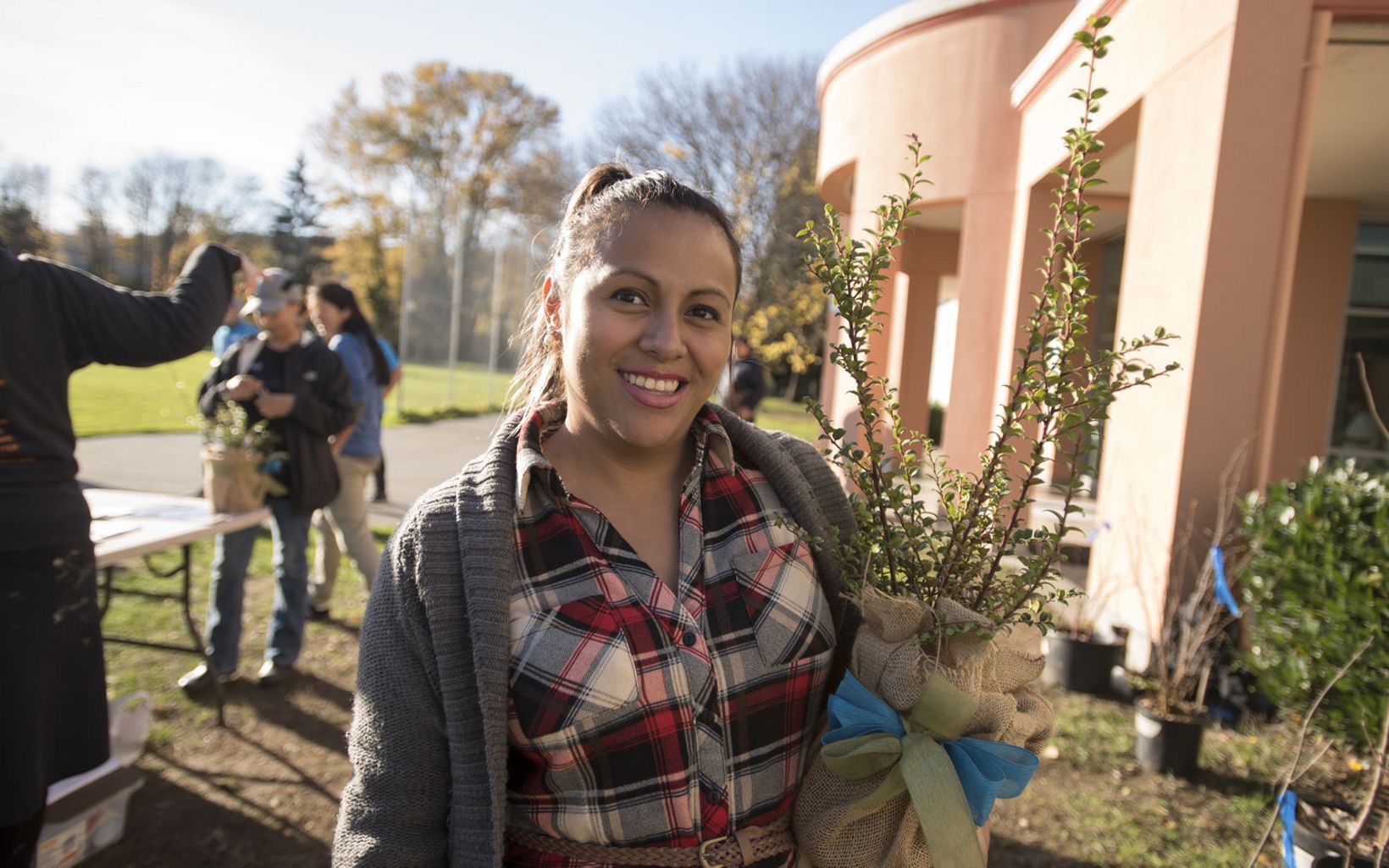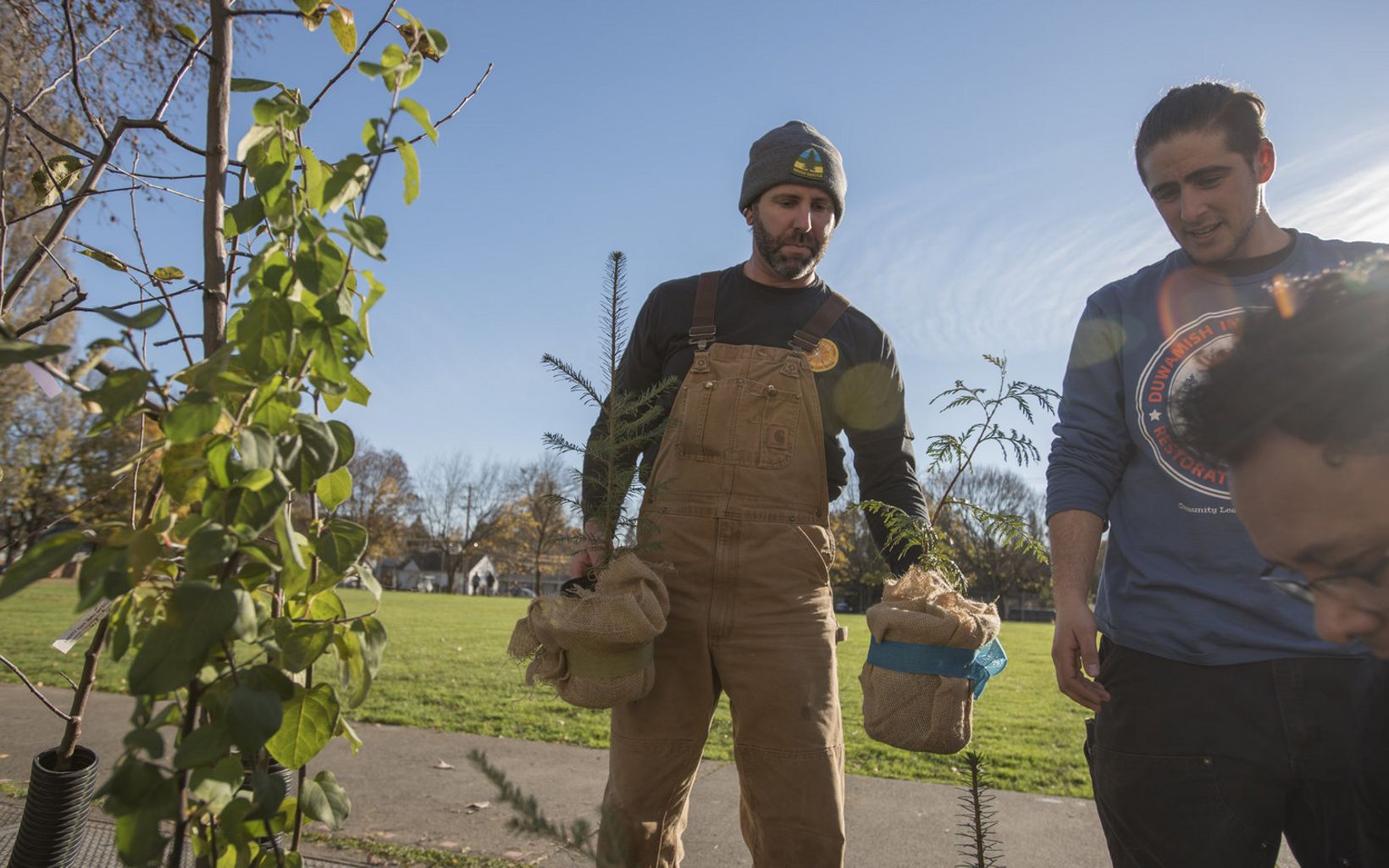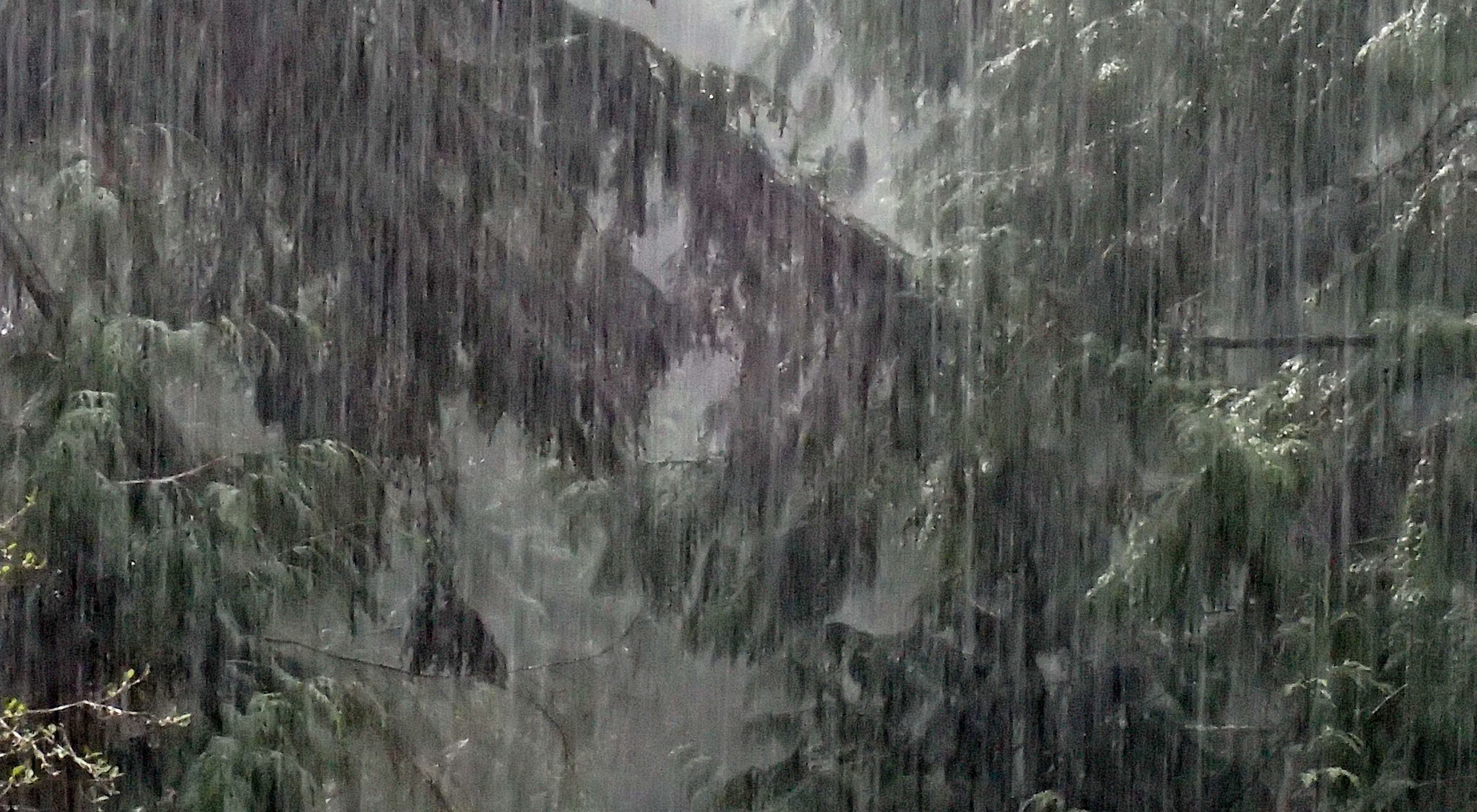Growing an Urban Forest
Story by Hannah Kett, Cities Program Manager, photos by Hannah Letinich
What is the image that pops up for you when you think “tree?” Is it a mountainside forest? A rain forest? Palm trees on the beach? For me, it is the trees right outside my front door in Seattle. These trees are also part of a different kind of forest – the urban forest.
Urban forests look a little different - coming in the form of small green spaces, street trees or your favorite backyard climbing tree. Together, these different trees and spaces are what make up our diverse urban forest that supports climate change resiliency, clean air, healthy habitat, beauty and more in the cities and towns where many of us work and live.
The Puget Sound Cities team is collaborating with non-profits, government agencies, businesses and more to support a healthy urban forest through the Planting Trees for Thriving Communities project. We launched this project back in May with funding support from The Boeing Company with the goal to enhance the tree canopy in our cities and towns around the region for the benefit of stormwater and the health of people.








Hawthorne Elementary School volunteer day and Duwamish Valley Youth Corps tree give-away are both bringing the power of trees into urban neighborhoods.
Here is a look at how we are tackling the goal so far:
Collaborating with Partners to Get Trees in the Ground
We are currently providing funding through grants to six different projects around Puget Sound that are engaging communities and planting trees to reduce stormwater pollution and respond to community priorities. Here are a few highlights from this fall:
Hawthorne Elementary kicked off their project with a community-wide volunteer day that engaged over 170 students, families and neighbors with art activities, gardening and planting trees. As Peter Schumacher, the parent lead for the project said, “We’re building an amazing and community space, but we’re also using this as an amazing opportunity for learning for our students and community.”
DIRT Corps partnered with the Duwamish Valley Youth Corps to distribute trees to neighbors during the Environmental Justice Youth Forum in South Park. After hearing from the youth about the neighborhood’s community and environmental priorities, attendees could take action as they walked out by picking up a tree for their yard!
Communicating Stories and Science
Throughout the project, we will be capturing the stories and images of those working on the ground. We are doing this through photos (like those above), videos and writing. The goal of these communications is to inspire change, celebrate progress and lift voices that are often unheard.
Science! We are also producing communications focused on relevant science – like trees and stormwater, trees and climate change, and more. Beyond the Conservancy, these tools are useful to our partners as they build their projects and engage partners
Connecting the Puzzle Pieces
As you can imagine, TNC is not the only player in the game when it comes to trees. However, we do have the regional scope, influence and capacity to catalyze more coordinated action around building a healthy urban forest. To serve this role, we are actively engaging partners from across the region to inform the project and participating in advisory committees on various collaborative projects. This is the piece of the puzzle that connects all the different parts of the project – and is probably the least communicated. But it is an important role as the Conservancy works to drive collective action on these environmental priorities.
This is exciting work! We hope you take the opportunity to engage with this project as it continues to develop – using the communications developed, volunteering at an event, sharing your tree story – or something else entirely.
